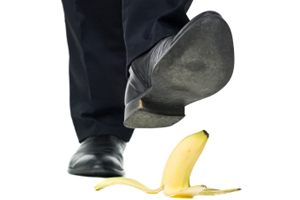 Every 29 minutes, an older adult dies from a fall, and every 15 seconds an older adult is treated in an emergency room for a fall-related injury. In fact, falls are the leading cause of fatal and nonfatal injuries for older Americans. According to the U.S. Centers for Disease Control (CDC) Injury Center:
Every 29 minutes, an older adult dies from a fall, and every 15 seconds an older adult is treated in an emergency room for a fall-related injury. In fact, falls are the leading cause of fatal and nonfatal injuries for older Americans. According to the U.S. Centers for Disease Control (CDC) Injury Center:
More than 20,000 older Americans died from injuries related to unintentional falls in 2009.
Over 2.3 million older Americans were treated in an emergency department for nonfatal injuries from falls, and more than 650,000 were hospitalized in 2010.
The death rate from falls among older adults increased by 55 percent from 2000 to 2007.
Simple fall-prevention precautions
The statistics are frightening but, fortunately, falls are not inevitable; many can be prevented by following these basic preventive measures:
- Clear your floor of clutter and anything that you can easily trip over, including loose wires, cords and rugs.
- Make sure stairways, entrances and hallways are well lit; install night lights in your bedroom and bathroom.
- Review your medications for side effects that can cause dizziness, affect balance or cause other side effects that could cause falls.
- Keep moving. Regular physical activity really helps prevent falls. Such activities as walking or water workouts can improve strength, balance, coordination and flexibility.
- Wear rubber-soled shoes for better traction. Avoid walking around in socks.
- Avoid having to climb or reach for items. Keep important items in easy-to-reach cabinets.
- Add grab bars to your tub, and use nonskid mats on bathroom floors.
- Be especially careful if you are a pet owner. Tripping over a pet is one of the most common causes of falls.
- Have your vision checked regularly and keep your glasses and/or contact lens prescription up-to-date.
Myth: Muscle strength and flexibility can't be regained.
Reality: Regardless of your age, strength and flexibility can be improved through exercise. Even if you have been a "couch potato" for years, becoming active now will benefit you in many ways-especially by helping protect against falls. (Consult your healthcare provider before beginning any exercise program.)
Falls are not a normal part of aging. Most falls can be prevented and there are many ways to reduce risk: participating in strength and balance exercises (such as Pilates, for example), medication management and making your living environment safer can all help to prevent falls.
